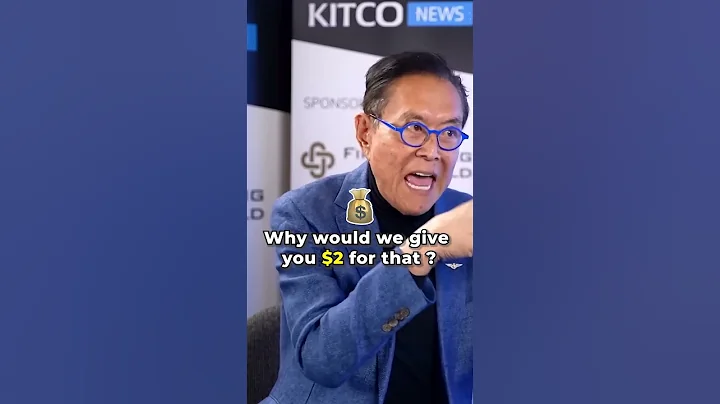management fee and custody fee has to be calculated
buys and sells ETF funds in a securities account. Because stamp duty is not charged, the overall transaction cost has been reduced a lot. But did you know that investors still need to pay management fees and custody fees to fund companies while holding ETF funds? For example, the familiar Shanghai and Shenzhen 300ETF (510300), the annual fund management fee is 0.5%, and the custody fee is 0.1%, which are drawn on a daily basis, so most investors feel it is not obvious.

custody fee and management fee investors have the right to choose? There are too. Investors can choose to charge lower management fees, such as products that also track the CSI 300 index, CSI 300 ETF (510310), the management fee is 0.15%, the custody fee is 0.05%, and the total management fee is It's 0.4% cheaper per year.

Maybe investors still think 0.4% per year, which is very rare. So if this 0.4% is accumulated over a long period of time, what kind of gap will there be? We have calculated the income gap between the 0.6% fee 510300 and the 0.2% fee 510310 in the past three years.

It can be clearly seen that whether it is a week, a month, or a quarter, low fees and relatively high fees have a little profit advantage. When this period of time stretches to one, two, or three years, the profit gap has further widened, even by a few percentage points. Even after excluding factors such as tracking errors, the low toll fee is still a substantial concession to investors. If investors invest in ETF funds for a long time,You need to seriously consider this cost.

Are there many ETF funds with low-tube toll
0.2% of tube-to-toll fees are too low. If there are fewer options or poor liquidity, it is meaningless . We have selected 0.2% of the products on the market that are under trusteeship, and each tracked index selects ETF funds with higher turnover under the premise of low fees, and the following product list is obtained.
1) Low-rate broad-based index ETF

Whether it is a traditional broad-based index 300, Shanghai 300, Shanghai span1 _span 50 _span 2span 300 The technology that is still gaining momentum now represents the Science and Technology Innovation Board and the ChiNext, both of which have low-rate ETF fund products. The annual fee rate is generally 0.2%, and a few are 0.3% and 0.35%.
2) Low-rate industry-themed ETFs

The same is true for new industry-themed ETFs such as pharmaceuticals and traditional securities, as well as those that are sought after by traditional banks. Vehicles, carbon neutrality, artificial intelligence, cloud computing and other industries all have relevant low-rate ETF funds. Most rates are 0.2%, and a few are 0.25%.
We listed 11 low-cost broad-based index ETF funds and 12 low-cost industry-themed ETF funds.It can basically meet the needs of ordinary investors in asset allocation. In addition to domestic index funds, recently the Hang Seng Technology ETF (513010) managed toll charge of 0.25%, Hang Seng H-share ETF (159823) managed to charge 0.2%, and low-rate overseas index ETF funds are also increasing.

Why do fund companies issue low-fee ETF funds?
There are not a few ultra-low fee rate ETF funds in the market. Why are fund companies keen to issue ultra-low fee rate ETF funds?
Huatai Bairui 's CSI 300 ETF was established in 2012, and E Fund's CSI 300 ETF 510310 was established in 2013, more than half a year later. Before the establishment of E Fund’s CSI 300 ETF, Huatai Bai Rui’s CSI 300 ETF had completed card positions, with a daily turnover of hundreds of millions. Its products were successfully recognized by market participants, mainly institutional investors.
Therefore, when E Fund established the CSI 300 ETF, it was faced with the dilemma of how to break through. After all, in order to gain investor recognition, it needs to find a competitive advantage. If there is no obvious competitive advantage, investors do not need to give up familiar targets and choose new ones. product. Therefore, E Fund chose to manage the drop to the end to impact the market and gain investors' approval.
In this way, familiar scenes are staged one after another. For various broad-based indexes and industry-themed ETF funds, the initial fund generally adopts a 0.6% custody fee, and then the latecomers use a low fee rate of 0.2% to attack the ETF fund with the first IPO advantage. Competition is a good thing. Investors have the option of lower rates. In fact, foreign ETF products with a rate of 0 are already available. 
In summary
When institutional investors invest,Not only must the fee rate be considered, but also the daily trading volume and liquidity must be considered. Ordinary investors basically do not need to consider this issue, and mainly choose low-fee rate, large fund company products.
Another point is that when ETF funds are traded in a securities account, the handling fee rate can be adjusted separately, generally less than one ten thousandth, and the threshold of 5 yuan can be exempted. Transaction commissions within one ten thousandths are lower than the 0.1%-0.12% subscription fees of over-the-counter funds. Coupled with the 0.2% Treasury ETF fund, the cost is lower than most OTC index funds and ETF feeder funds, and low-cost ETF funds are really popular.
every penny saved will earn you more profits in the future. Investment is to plan carefully!
After the end of this article, please pay attention to those you like!
.










